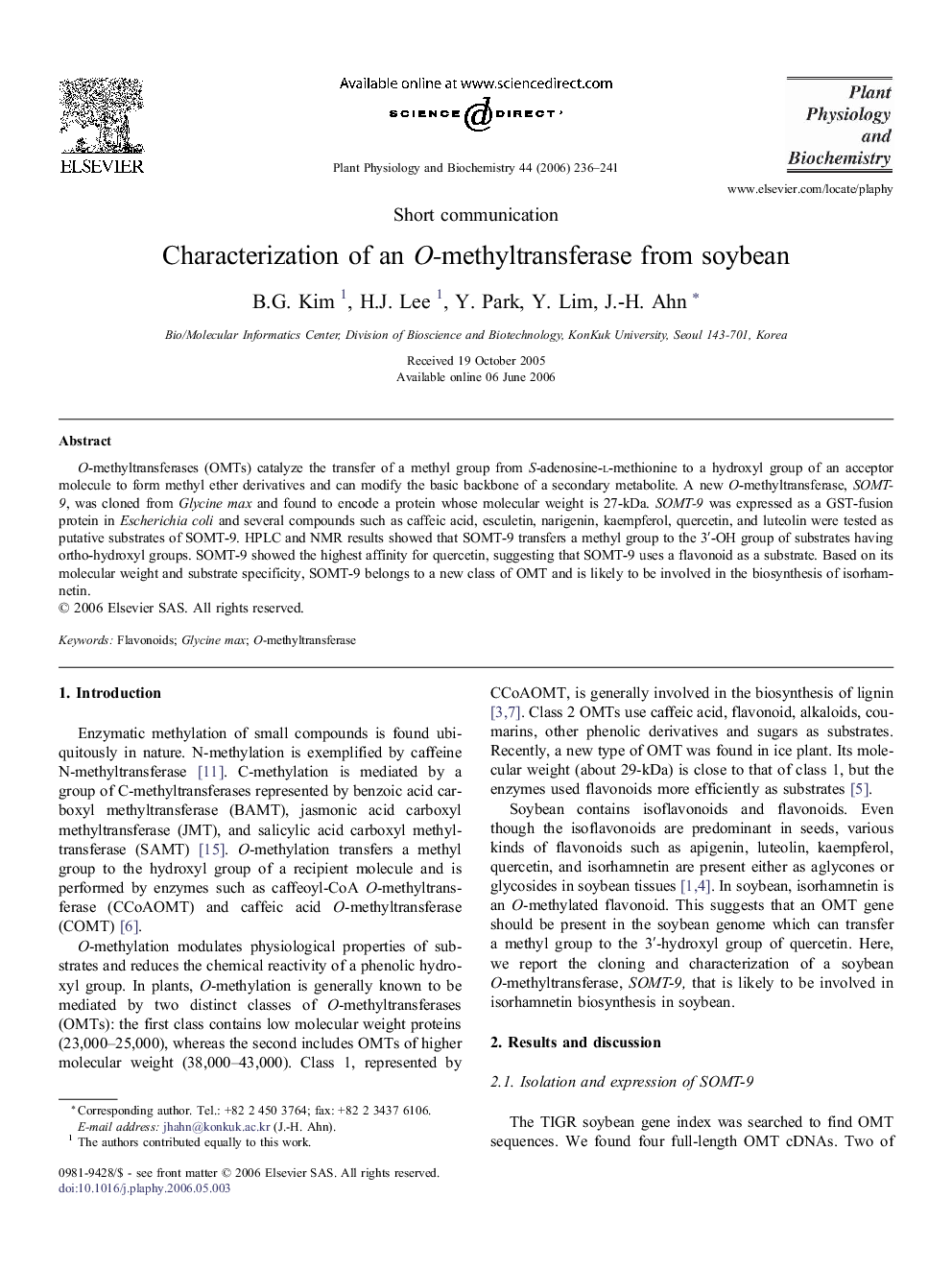| Article ID | Journal | Published Year | Pages | File Type |
|---|---|---|---|---|
| 2016876 | Plant Physiology and Biochemistry | 2006 | 6 Pages |
Abstract
O-methyltransferases (OMTs) catalyze the transfer of a methyl group from S-adenosine-l-methionine to a hydroxyl group of an acceptor molecule to form methyl ether derivatives and can modify the basic backbone of a secondary metabolite. A new O-methyltransferase, SOMT-9, was cloned from Glycine max and found to encode a protein whose molecular weight is 27-kDa. SOMT-9 was expressed as a GST-fusion protein in Escherichia coli and several compounds such as caffeic acid, esculetin, narigenin, kaempferol, quercetin, and luteolin were tested as putative substrates of SOMT-9. HPLC and NMR results showed that SOMT-9 transfers a methyl group to the 3â²-OH group of substrates having ortho-hydroxyl groups. SOMT-9 showed the highest affinity for quercetin, suggesting that SOMT-9 uses a flavonoid as a substrate. Based on its molecular weight and substrate specificity, SOMT-9 belongs to a new class of OMT and is likely to be involved in the biosynthesis of isorhamnetin.
Related Topics
Life Sciences
Agricultural and Biological Sciences
Plant Science
Authors
B.G. Kim, H.J. Lee, Y. Park, Y. Lim, J.-H. Ahn,
